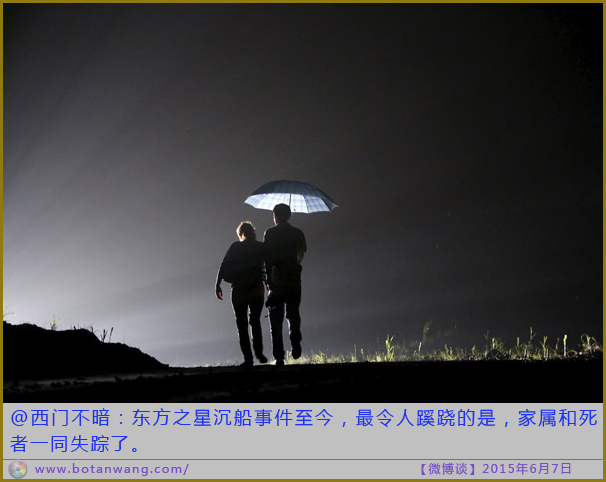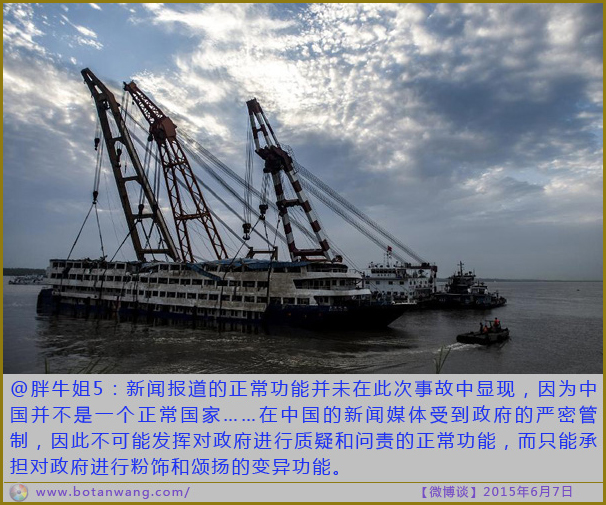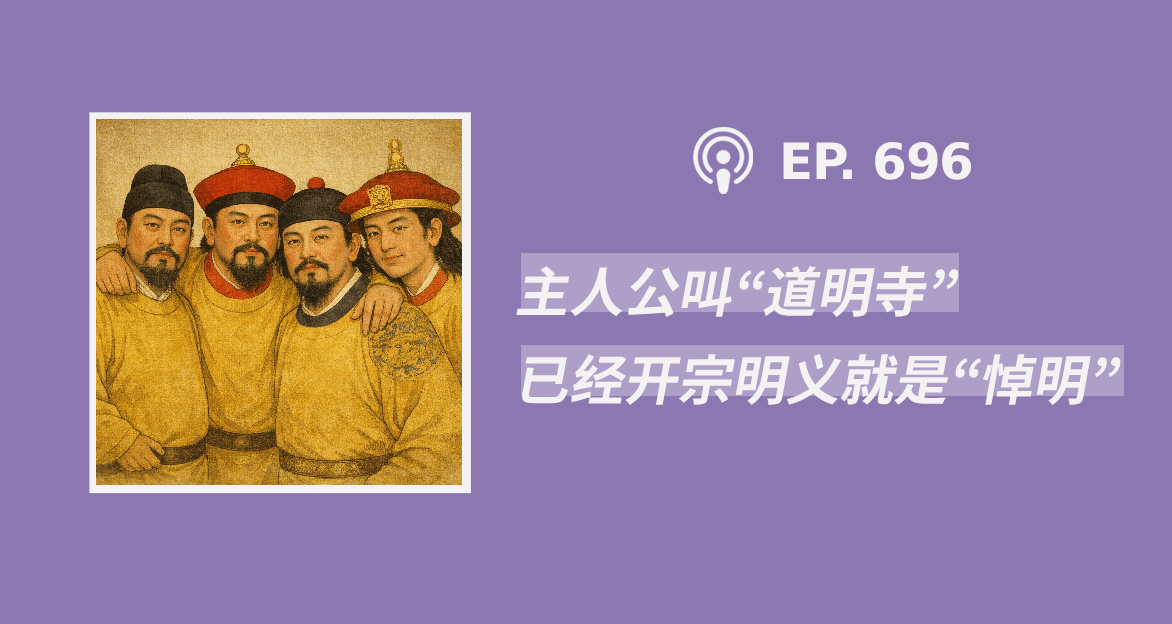
epaselect epa04785405 Relatives of the capsized tourist ship passengers burn incense as they grieve along the Yangtze River in Jianli, Hubei province, China, 06 June 2015. There were 458 people on the ship, mostly aged tourists, when the ship turned upside down in the Yangtze River on 01 June night in Hubei province. The death toll of the accident is expected to be over 400. EPA/WU HONG




A woman prays at a candlelight vigil to pay respects to the passengers of the sunken cruise ship Eastern Star on the Yangtze River, at a public square in Jianli, Hubei province, China, June 4, 2015. Hundreds of relatives of passengers from the Chinese cruise ship that foundered on the Yangtze River gathered in a public square in Jianli on Thursday clutching candles and flowers, as rescue officials began the arduous task of righting the vessel. Several family members, their eyes brimming with tears, knelt in the center of the city square, about a-1.5 hour drive from the site of Monday’s disaster that left 75 people dead and over 370 missing. REUTERS/Kim Kyung-Hoon



(所有图片均来自网络)
1. @杜子健:羞启键盘骂文狗,愧写汉字说长江;谁用尸骨颂日月,谁在滩头哭高堂!
2. @田科武:新词诞生了:好到违法。比如:滴滴。
3. @西门不暗:东方之星沉船事件至今,最令人蹊跷的是,家属和死者一同失踪了。
4. @王晓渔:“对于盛世来说,灾难是巨大的污点。但是,盛世轻松地消解了灾难,发明了温情脉脉的灾难美学,灾难的残酷性被救灾的好人好事取代,救灾者成为主角,遇难者成为配角——灾难美学代替了灾难反思。庆典和灾难互相冲突,但是庆典美学和灾难美学并行不悖,这是盛世的美学奇观。”这是2010年写下的一段文字。
5. @胖牛姐5:新闻报道的正常功能并未在此次事故中显现,因为中国并不是一个正常国家……在中国的新闻媒体受到政府的严密管制,因此不可能发挥对政府进行质疑和问责的正常功能,而只能承担对政府进行粉饰和颂扬的变异功能。
6. @洪峰:456人,自己爬上来7个,漂到下段被救上来5个,船难现场只救出来2个。你感恩《生为国人,何其有幸!》美学《救援一线,中国最帅的男人都在儿啦》,振奋《世界透过沉船事故见中国决心》。虽然死的都不是你我的亲人,也该有点起码的人味儿吧?有人要说了,中国不好你滚出去!尼玛你以为中国是你的啊?///@吴有水律师:什么叫真相?真相就是:四百多人只救起了两个人,却出了一大批赞歌!……感恩、感动、感激!但是不准感慨!
7. @谢泼德:咱们心平气和地说,中国的救援技术和专业程度很可能还很落后,至少没有领先到令人自豪的程度。与此相对的是,这个政府可能是世界上最富有,对内最有权势,掌握最大资源的,所以我说,它所做的和它所能做的相比,其实不值得夸赞。即便是对死者形式上的尊敬,我印象中都是键盘侠们在汶川时争取来的。
8. @青鲤君:08年汶川地震我大表哥去黑水出差,然后死在半路。那时候的我看着“多难兴邦”四个字,觉得无比的愤怒。我告诉你什么是羞辱,就是我永远失去我所爱的亲人时,有人来用“兴邦”这样于我无用的狗屁抹消我所有的切肤之痛。它在说你们死了没关系,国家兴盛就好了。
9. @作家崔成浩:客轮沉没,乱了阵脚的南朝鲜伪总理马上赶去慰问,结果遭数名家属泼水,导致狼狈不堪。如果我是他,就会第一时间赶赴现场,亲自指挥救援,要求不惜一切代价搜救被困人员,全力抢救伤员,坚决查明事故原因,积极做好善后工作。至于家属,一定要在情绪稳定以后再去看望。坏事不会变好事,干部当的太无能!
10. @Rose_芙蓉:今天(6月5日)下午的东京涩谷街头,风雨欲来。这个全东京最大的十字路口的大屏幕上,播出速报:“中国,长江颠覆客船开始打捞,至今死者97人、不明者345人”(翻译)~为死者默哀,为死者家属和生者祈福!///@财经女记者部落:陆家嘴今晚夜景:傲娇庆祝沪指突破5000点!
















